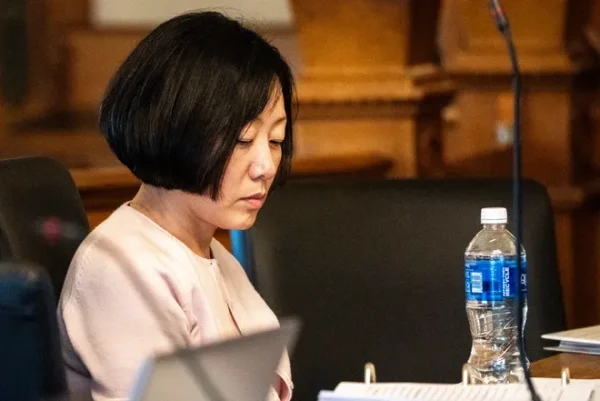Curriculum Changes Won’t Bring Schedule Changes
December 3, 2010
Simpson College has taken the initiative to make changes to its academic curriculum and class schedules, but not all of those plans will go in to affect as soon as once expected.
Instead of implementing the extended class schedule in the fall of 2011 with the rest of the curriculum changes, Simpson will have a trial period with the proposed class schedule that will hopefully accommodate professor’s needs in the classroom.
Steve Griffith, senior vice president of the college and academic dean, has expressed in an e-mail interview, the need for a gradual transition into this system.
“There will not be any concrete change, unless we do some testing and feel that making a change is of positive benefit,” Griffith said. “If we do the testing by the end of summer 2011, we will be able to decide in the fall of that year whether or not we can go ahead and make the change to the new schedule. The earliest we could transition would be fall of 2012.”
This change means that all current Monday, Wednesday and Friday classes will soon be 60 minutes rather than 50 minutes. And for Tuesday and Thursday classes, the time slot will be 90 minutes instead of 75 minutes.
When the new curriculum ideas were first discussed, some faculty felt there was a need for a new daily schedule that would better accommodate different teaching styles. With four credit hour classes, some professors thought it would be beneficial to have more class time for discussion and reflection over course material. Some professors also suggested a four-day class week would help with labs and language studies.
However, there were some conflicts with the first proposed class schedule and certain department’s needs.
Associate Professor of Political Science Kedron Bardwell decided to take matters into his own hands to develop a better schedule to supplement the new curriculum.
“I spent the first part of this past summer coming up with a schedule that worked for everyone,” Bardwell said. “By the end of June, I sent out a survey to the faculty to get some input on how the plan could be improved. Some changes were made and then the new schedule had to be approved by the administration before it went to a faculty vote.”
When the faculty did vote, a 64 to 36 percent ratio favored the changes. Although the new schedule has been voted on and passed, there is still some hesitation to fully implement it right away.
“Before making such a big change, I felt that we needed to do some testing and perhaps a “dry-run” before we went ahead,” Griffith noted. “With all of the other changes that we are making to get ready for the Engaged Citizenship Curriculum, I didn’t think we had enough time to do the testing.”
So what does this mean for students?
Starting in the fall of 2011, the Engaged Citizenship Curriculum will require four credit hour classes, but will still follow the current class schedule with 50 and 75 minute classes.
In addition to the curriculum shift, each academic department will be condensing their requirements for all majors and minors.
“It’s going to be a balance for students,” Bardwell said. “But I don’t think students will hit a brick wall. Since the majors and minors are shrinking, students will just have to re-declare their fields of study. The course load will drop, and it should be about the same work load as it is now.”
The intended goal is to allow professors more time with students in the classroom. And since every professor has a different teaching style, the hope is that more interactive learning can take place.
“As a former teacher myself, I would appreciate having more time in a class period because I generally liked to start a class with a re-cap of what we did the class before, end the class period with a summary of what we did that day, and then where we are going next time,” Griffith noted.
“Having more time might also allow me to break students into groups, do more hands-on interaction, and try out other types of teaching methods that might take more time. The issue isn’t about just adding time, it is what the instructor will be doing with the time.”












